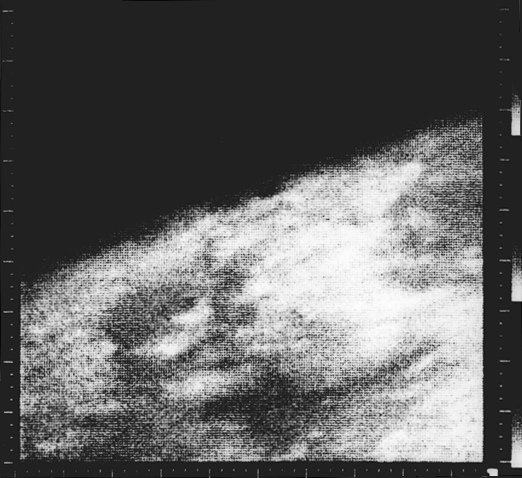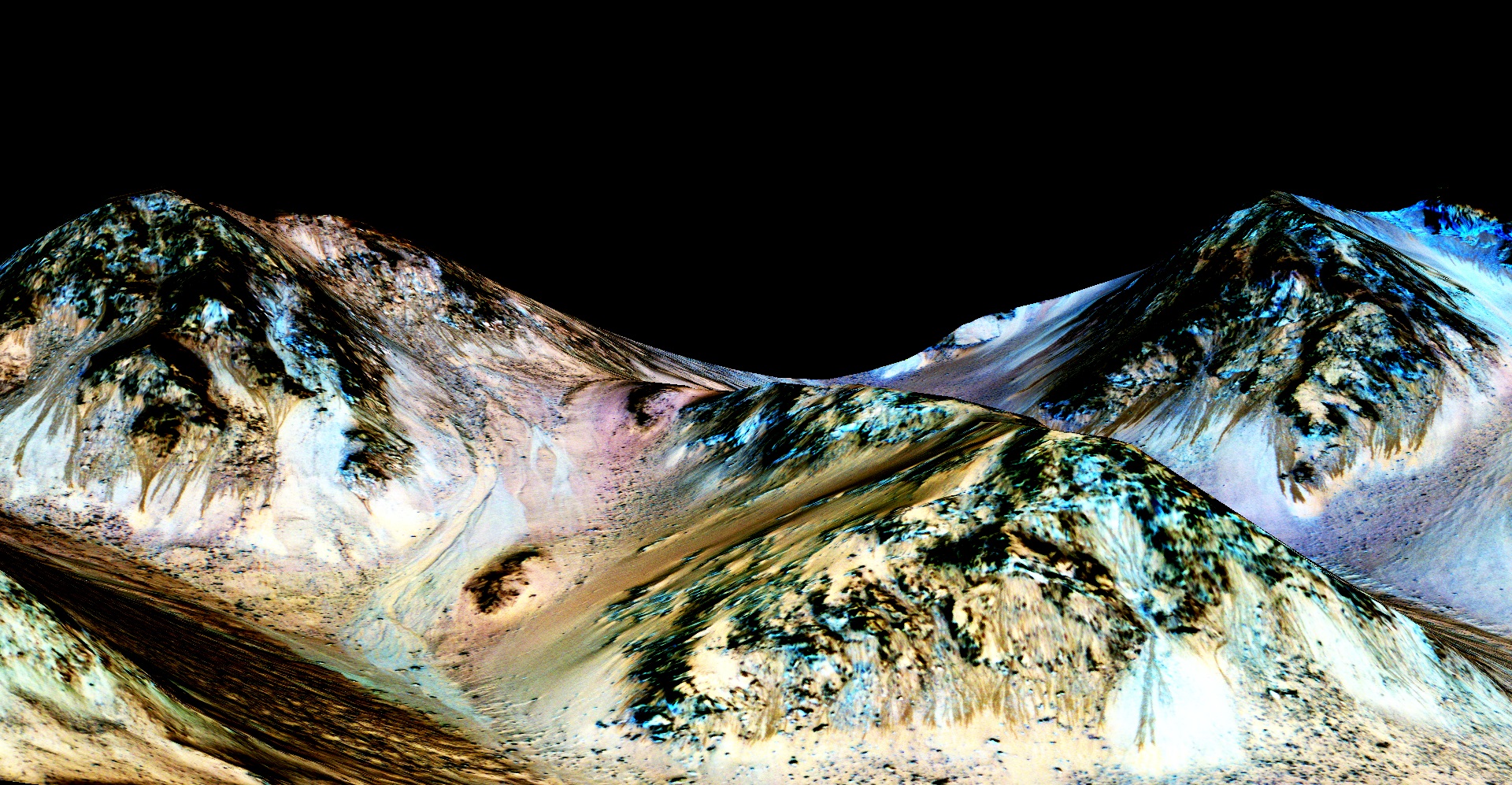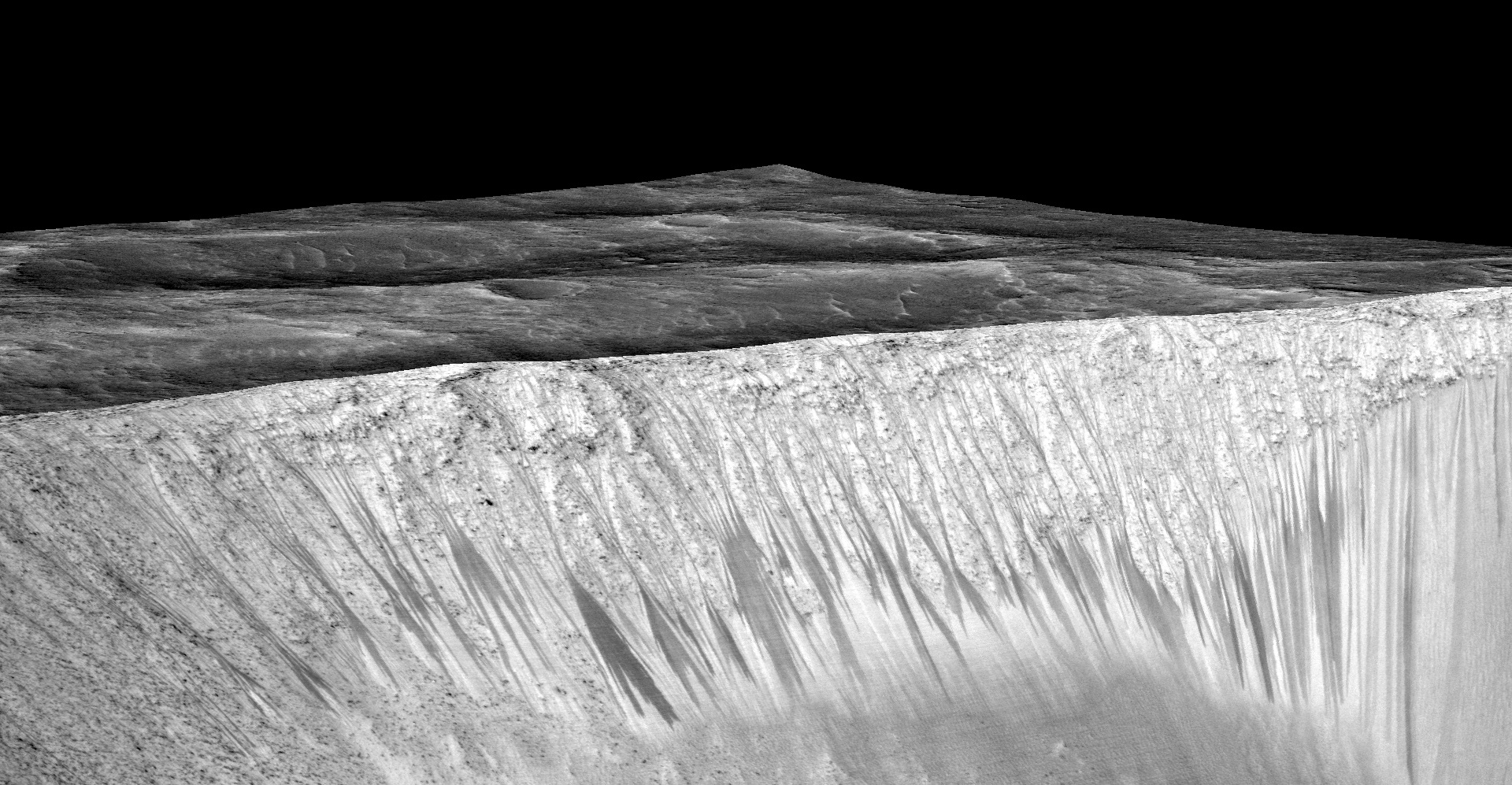In Photos: Is Water Flowing on Mars?
Scientists say they've found evidence of flowing water on Mars. Salty brines found in dark streaks that show up and disappear throughout the Martian year are evidence that briny water is flowing on the Red Planet, scientists say. Have astronomers always considered Mars a likely hotspot for water ... and possibly life? Turns out, our view of Mars has changed drastically through the years from Italian astronomer Giovanni Schiaparelli's 1877 view of a lush scape rife with water-filled channels to an arid, inhospitable orb and now a more complete picture of the chilly planet, where dust storms are rampant and water, at least the very salty kind, may be meandering across its surface.
Cloudy view
On July 14, 1965, Mariner 4 passed within 6,118 miles (9,845 kilometers) of the Martian surface, providing the first close-up snapshots of the planet. The 22 resulting images showed a surface pitted with craters. The mission also confirmed a thin atmosphere composed of carbon dioxide and an intrinsic magnetic field. Here is the first image of Mars, showing an areanear the boundary of Elysium Planitia to the west and Arcadia Planitia to the east. (Photo Credit: NASA)
Salt water
Dark, narrow streaks (called recurring slope linae), which extend about 330 feet (100 meters) and seem to flow downhill on Mars may be the result of flowing water on the Red Planet. Now, scientists have found hydrated salts on these slopes at Hale crater (and elsewhere on the lunar surface), corroborating this watery hypothesis — indeed, flowing water left behind these dark streaks. The presence of the mineral pyroxene creates the blue hue seen upslope of the dark streaks. Their study is detailed online Sept. 28, 2015, in the journal Nature Geoscience. (Credit: NASA/JPL/University of Arizona)
Meandering in Garni crater
These dark narrow streaks (recurring slope lineae) run up to a few hundred meters, emanating out of the walls of Garni crater on the floor of Mars' Melas Chasm. (Garni crater's name was just approved in April 2015, originating from a village in Armenia.) Briny water flowing on Mars likely created the slopes, scientists now say. (Credit: NASA/JPL/University of Arizona)
Get the world’s most fascinating discoveries delivered straight to your inbox.
Equatorial slopes
Recurring slope lineae flow down the west-facing slopes of Coprates Chasma in the equatorial region of Mars. Corporates Chasma is a wide trough within Valles Marineris, a canyon system that runs east-west just south of the Martian equator and is long enough to stretch from Los Angeles to New York City, according to NASA. (Credit: NASA/JPL/University of Arizona)
Horowitz crater
Scientists also discovered these dark streaks, incorporating hydrated salts, at Horowitz crater (shown here). (Credit: NASA/JPL/University of Arizona)
Puzzling lines
These enigmatic streaks, which are typically less than 16 feet (5 meters) wide, are known to show up on Martian slopes during the warm seasons. The streaks lengthen and then vanish during the cooler seasons, scientists have known. These temporal features were thought to be evidence of flowing water, but nobody could prove that.
Until now, spectral data collected from spacecraft could not provide reliable information at such a small scale (the streaks are narrow).
Shown above, another view of the dark streaks at Horowitz crater. (Credit: NASA/JPL/University of Arizona)
Capturing spectra
In the new study, Lujendra Ojha of the Georgia Institute of Technology in Atlanta and colleagues looked at data collected by the CRISM instrument onboard NASA's Mars Reconnaissance Orbiter for spots where the dark streaks would form. The instrument detects wavelengths of light, in both visible and infrared, reflected from the Martian surface. "At visible wavelengths, the way light is reflected is strongly influenced by iron in minerals - for example rust, or iron oxide, appears red," according to NASA. "At infrared wavelengths, CRISM can 'see' features due to sulfate, carbonate, hydroxyl, and water incorporated into mineral crystals, plus it has greater sensitivity to the kinds of minerals containing iron."
Shown here, another view of the dark streaks at Horowitz crater. (Credit: NASA/JPL/University of Arizona)
Follow Live Science @livescience, Facebook & Google+.
Jeanna Bryner is managing editor of Scientific American. Previously she was editor in chief of Live Science and, prior to that, an editor at Scholastic's Science World magazine. Bryner has an English degree from Salisbury University, a master's degree in biogeochemistry and environmental sciences from the University of Maryland and a graduate science journalism degree from New York University. She has worked as a biologist in Florida, where she monitored wetlands and did field surveys for endangered species, including the gorgeous Florida Scrub Jay. She also received an ocean sciences journalism fellowship from the Woods Hole Oceanographic Institution. She is a firm believer that science is for everyone and that just about everything can be viewed through the lens of science.









